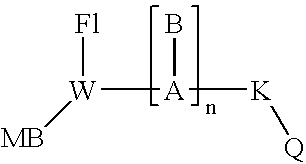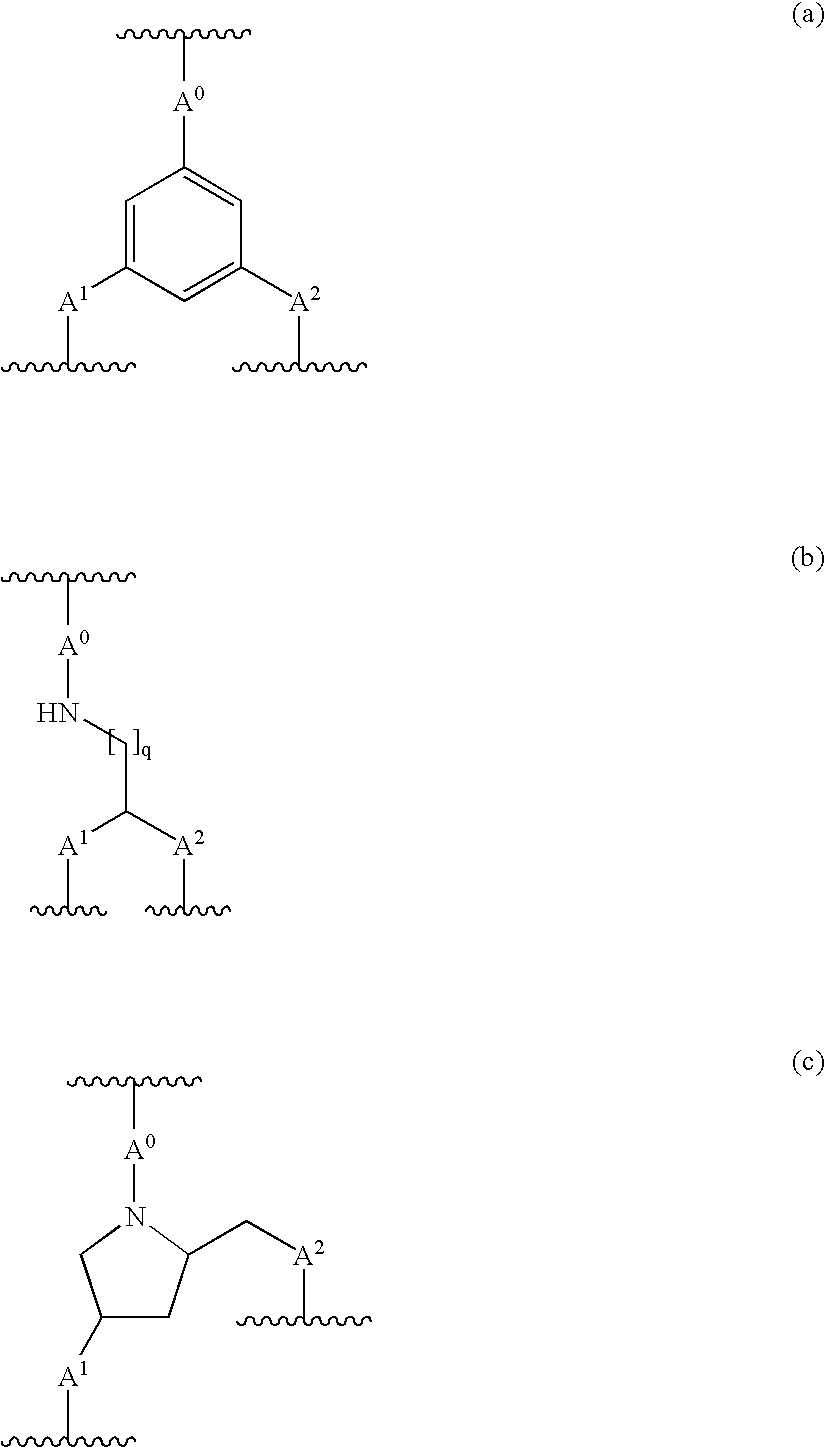Fluorescent probes for DNA detection by hybridization with improved sensitivity and low background
a fluorescent probe and hybridization technology, applied in the field of fluorescent probes for dna detection by hybridization with improved sensitivity and low background, can solve problems such as unsuitable for real-time amplification applications, and achieve the effect of increasing the stability of duplex formation
- Summary
- Abstract
- Description
- Claims
- Application Information
AI Technical Summary
Benefits of technology
Problems solved by technology
Method used
Image
Examples
example 1
[0157] This example demonstrates the improved signal to background ratio for probes of the invention as compared to MB Eclipse probes. In order to do that fluorescence signal of free probes and probes after hybridization with synthetic complements were measured. The sequences of the probes and synthetic complements are shown in FIG. 3. The experiments were carried out on Varian Cary Eclipse fluorescence spectrophotometer with excitation either at 496 nm for FAM or at 530 nm for Yakima Yellow (YY) and an emission wavelength of ether 518 nm for FAM or 550 nm for YY. Excitation and emission slits of 5 nm were used. Background fluorescence was recorded in a solution containing 0.1 μM probe (either MB Eclipse or new probe of the invention), 40 mM NaCl, 5 mM MgCl2, 10 mM Tris-HCl pH 8.7. For duplex formation 0.5 μM (final concentration) complement was added. Prior to the fluorescence measurement the reaction was pre-heated to 60° C. and then cooled to 20° C.
example 2
[0158] This example illustrates improved stability of background fluorescence (fluorescence of unhybridized probe) of the probes of the invention in comparison to MGB-Eclipse probes as a function of temperature (see FIG. 4). The experiments were carried out on Varian Cary Eclipse fluorescence spectrophotometer equipped with a temperature controlled cell with excitation either at 496 nm for FAM or at 530 nm for Yakima Yellow (YY) and an emission wavelength of ether 518 nm for FAM or 550 nm for YY. Excitation and emission slits of 5 nm were used. Solutions contained 0.2 μM probe (either MB Eclipse or new probe of the invention), 40 mM NaCl, 5 mM MgCl2, 10 mM Tris-HCl pH 8.7.
Probe Sequences:
[0159] Eclipse #1 MB-Q-5′-CAGAGACATACA*CCA-FAM (or YY) [0160] Eclipse #2 MB-Q-5′-G*TATGTCTCTGACTCC-FAM (or YY) [0161] New Probe #1 MB-FAM(or YY)-5′-G*TCAGAG*ACATACA*CC-Q [0162] New probe #2 MB-FAM(or YY)-5′-G*TATGTCTCTGACTCC-Q [0163] G* is PPG, A* is hydroxybutynyl-diaminopyrazolopyrimidine modif...
example 3
[0164] This example demonstrates a) the ability of conjugated minor groove binder to quench fluorescence and b) concerted fluorescence quenching mechanism involving both the minor groove binder and Eclipse Quencher (see FIG. 5). The experimental conditions were as described in Example 1 and 2.
Probe Sequences:
[0165] MB-FAM-5′-G*ATGTGTCCGTGTCTC-Quencher or no quencher
Complement sequence:3′-TACCTAACTACACAGGCACAGAGAAA
PUM
| Property | Measurement | Unit |
|---|---|---|
| Temperature | aaaaa | aaaaa |
| Temperature | aaaaa | aaaaa |
| Fraction | aaaaa | aaaaa |
Abstract
Description
Claims
Application Information
 Login to View More
Login to View More - R&D
- Intellectual Property
- Life Sciences
- Materials
- Tech Scout
- Unparalleled Data Quality
- Higher Quality Content
- 60% Fewer Hallucinations
Browse by: Latest US Patents, China's latest patents, Technical Efficacy Thesaurus, Application Domain, Technology Topic, Popular Technical Reports.
© 2025 PatSnap. All rights reserved.Legal|Privacy policy|Modern Slavery Act Transparency Statement|Sitemap|About US| Contact US: help@patsnap.com



